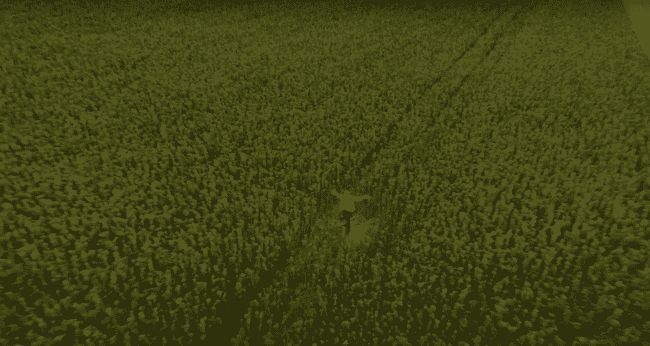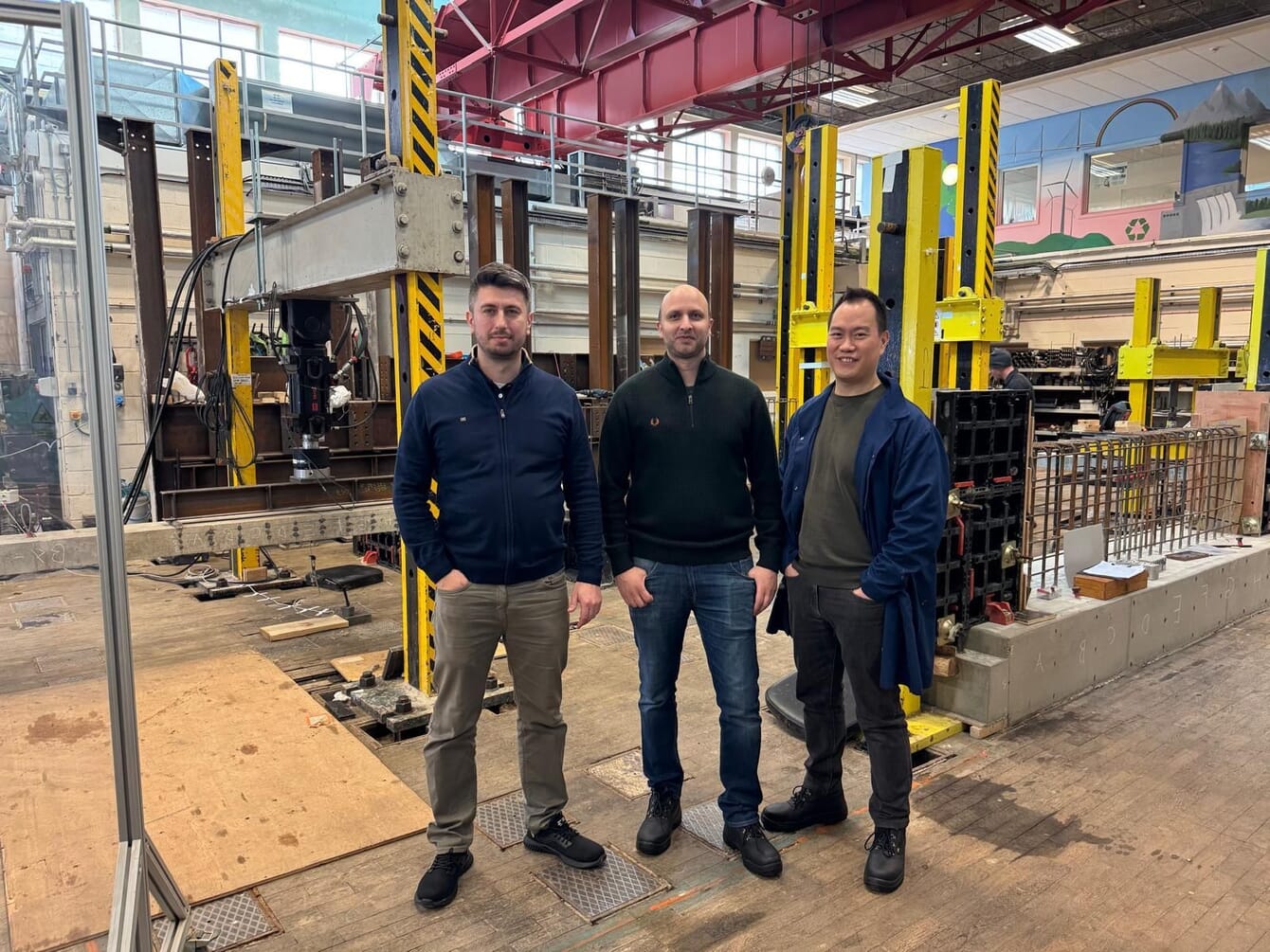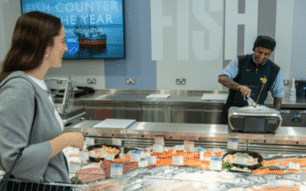
© Rare Earth Global
So prolific that it’s described as a weed (or simply weed) in many regions, hemp has had a long – and often complicated – shared history with humanity.
It’s been vilified and venerated in equal measure for the psychotropic compounds contained in some strains of cannabis. Yet it’s a plant that has many more mundane yet potentially high impact – qualities that make it well suited both to provide an alternative to soy in aquafeeds and as a means to sequester carbon.
And, at a time when many of the alternative aquafeed ingredients are struggling to scale, Jamie Lewis, founder and CEO of Rare Earth Global – which helps farmers to grow hemp and then buys it back from them – is convinced that the plant should no longer be overlooked.
Lewis, whose career has included stints in yachting, property and corporate finance, first began to look into hemp about a decade ago, while researching treatments for a family member who’d been diagnosed with cancer. He soon realised that hemp’s apparent medicinal properties were far from newly discovered, and that the plant had had close connections with societies all over the world for millennia.
“The way to think about hemp is not that it's a new crop, it's a forgotten crop. It's been so prevalent in the past throughout human society and you can track it within most major civilisations. My mum's Persian, and originally didn't understand what I was talking about, but then she realised it was Shah Daneh – which translates to ‘the Royal Seed’,” he explains.
Hemp as a crop
Farmers in the US were prohibited from growing hemp for much of the 20th century, which helps explain why it was largely forgotten in mainstream agriculture, according to Lewis.
“In America, because it was so competitive with a lot of the sectors that were backed by some really powerful lobbying groups, it was prohibited for about 60, 70 years. And then it wasn't until the late 1990s that a few of the Commonwealth countries – the UK, Australia and Canada – started looking at it for its natural fibre qualities again,” he reflects.
“There were a few companies that almost went big at that point, but they didn't get the support and funding. But I know some of the directors who are now retired OGs [original gangsters] of the sector and say that our timing is just perfect. Not only because of net zero, but because it's a solution that we can conceivably scale quicker than all the other aquafeed alternatives,” he adds.
Most of the world’s hemp production currently takes place in Canada, France and China, but Lewis notes that it’s a tremendously hardy crop that can be cultivated much more widely. He sees its main potential as being part of a rotation with more mainstream crops such as grains.
“Hemp really complements a lot of existing farming systems. So, often the way we've worked with various cooperatives across Europe and the UK is that we include hemp within a crop rotation. It's not a difficult sell to farmers because the economics are reasonable. It also has a very measurable positive impact on soil health and massively reduces pesticide dependency,” Lewis explains.
Other advantages of cultivating hemp include its rapid growth – in terms of terrestrial plants only bamboo grows quicker – increasing by a metre per month with only minimal inputs, to produce an average yield of between 4 and 12 tonnes per hectare depending on the seed genetics we deploy. Of this the seed – which is the part that will be used in aquafeeds – makes up around 5 percent of the biomass, while the remainder can be used in the production of a more environmentally friendly form of concrete, with the potential to lock up vast volumes of carbon in the process.
Despite many positives, it’s still a niche crop, with niche applications.
“Hemp is used for some bags, for some car panels as a composite, But we just started thinking if there was more of this material being grown, what are the products that we could make and what is the amount of CO2 that could be removed through the natural sequence of CO2 sequestration. When you compare it to growing trees, if you measure it, you get up to eight times more CO2 being removed by growing hemp when measured against the same land area and time line,” Lewis reflects.

© Rare Earth Global
The business model
Rare Earth supports farmers with seed selection and agronomic inputs. They currently process the hemp too, using their unique technology. They also deliver the final product to customers and aim to help large corporations that are looking to reduce their carbon footprints, in particular by reducing their scope 3 emissions.
“Processing the hemp is based on IP that we've developed around the formulation and the process. And it's turned from a seed into a specific product that the fish feed sector is looking for, dependent on the customer. Sometimes they're happy with something that's closer to soybean meal, sometimes they want something that's closer to a concentrate. Rare Earth is the entity that the customer deals with. Our supply chain involves us subcontracting and supporting farmers and processors to be able to produce the product to the specification that's required by the customer,” Lewis explains.
“And we found that one of the areas where we’ve really excelled over the last few years is with those discussions with the big off-takers that are currently buying thousands or tens of thousands of tonnes of soy. It's really difficult for individuals to go through that process, it can take 18 months and there’s a lot of compliance involved. So Rare Earth is very much the company that will be looked at as the reliable supplier,” he adds.
Aquafeed trials
In terms of aquafeeds, Rare Earth’s initial focus is on the salmon industry, as hemp seeds have an ideal protein profile, a good ratio of omega-3s to omega-6s and are rich in micronutrients. The initial trials look promising, according to Lewis.
“We're the first company in the world to undertake research of putting this product into the commercial aquafeed space and the outcomes were really compelling. We ran a feasibility study first of all and then that moved into a broader commercial pilot alongside Mowi. And yet across all the key metrics, we were as good as – or a little bit better than – soy,” he explains.
What’s more, at a time when other alternative proteins are struggling, Rare Earth believes that they can not only rapidly upscale – with a target to reach 40,000 tonnes within five years – but also deliver it at a better price point than the likes of insect meal and single cell protein producers.
“They've had hundreds of millions of pounds thrown into them. We raised just over a million pounds yet we're already able to deliver our product at a better price point than all of those. That's a really exciting point to be at,” he observes.
Meanwhile, in terms of their bio-concrete project, they have passed the feasibility stage and are moving through the R&D process. They have also commissioned a study which suggests that hemp cultivation can remove up to 20 tonnes of CO2 per hectare, every four-month growth cycle. As a result, Lewis calculates that – if they can replace a fifth of the area used for global soy production and use all the stalk material in concrete – they could potentially remove up to a gigaton of CO2, which is a significant portion of global emissions.
“The whole world is producing around 37 gigatonnes I think, annually. So that's a huge, huge impact. Obviously, you need to make sure you're sequestering it the right way and it’s all being audited programmatically, but it gives you an idea of just how big a net zero solution hemp could be. It's not a panacea, but it's definitely quite major. And it's ready to go,” he enthuses.

Scaling and future plans
Rare Earth Global now plans to scale operations in line with projected industry demand, with the aim of supplying 5,000 tonnes annually within 2 years and 40,000 tonnes annually within 5 years. Looking further ahead, they see scope to scale exponentially.
“In an ideal world, we see ourselves really looking to replace deforestation-linked soy and potentially fishmeal to a large extent across the world in relation to aquaculture. It's a multi-billion dollar sector and we see such tremendous potential to be growing this crop across a range of jurisdictions – ideally as close as possible to the customers,” notes Lewis.
In order to support the next stage of this growth, Rare Earth Global is preparing for a larger funding round later this year and is looking to use it to grow their team, as well as expand in Europe, Asia and South America.
Ultimately they aim to disrupt both the agriculture and aquaculture markets.
“The three holy tenets for disruption are always going to be: do you have a better product; does it have better environmental considerations; and can you deliver it at the right price point for it to actually be attractive?,” notes Lewis.
And, according to Lewis, it’s an emphatic “yes” on all three.







